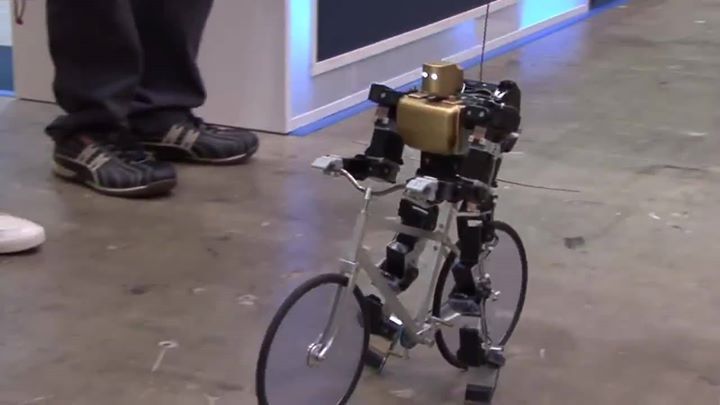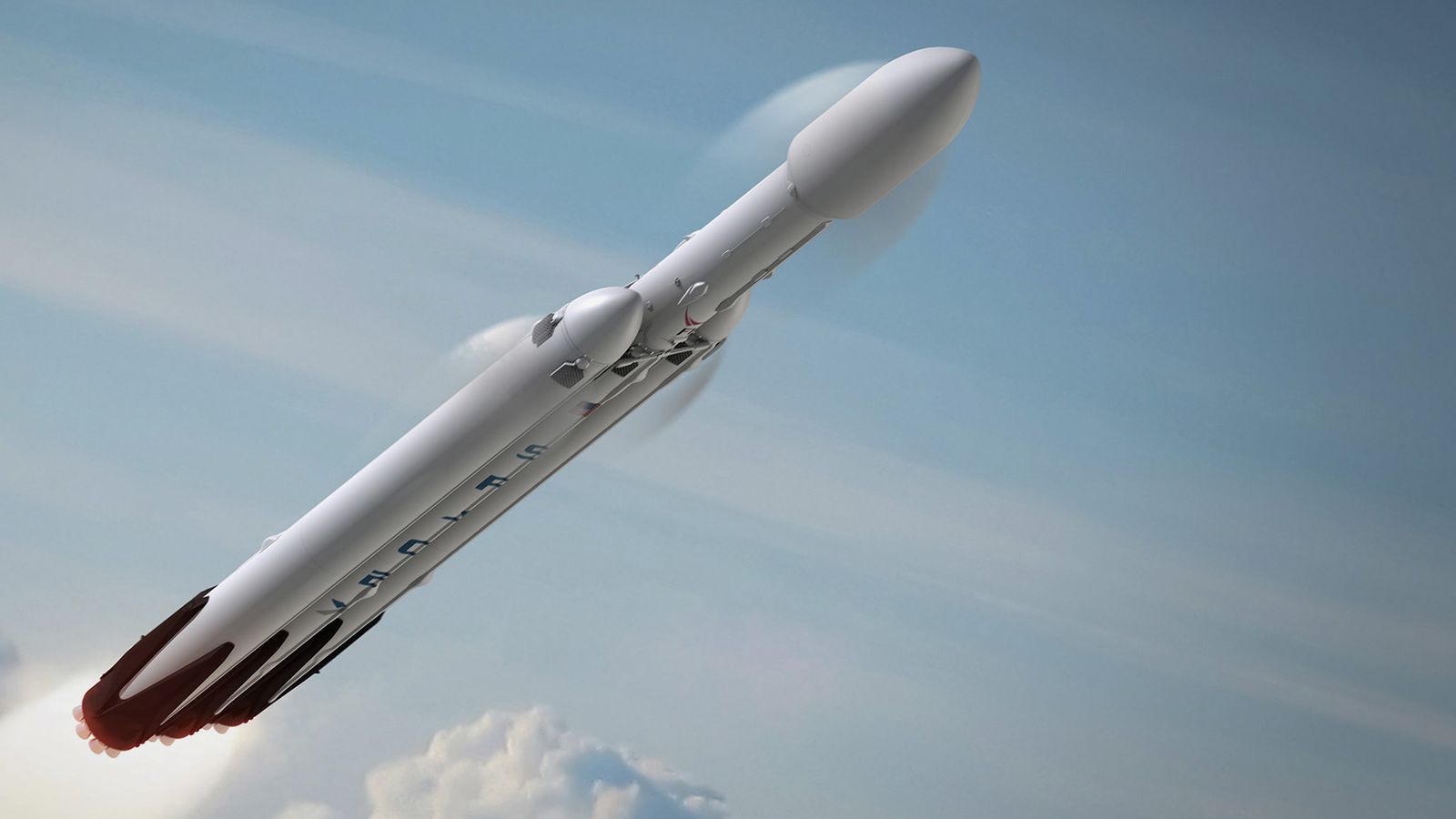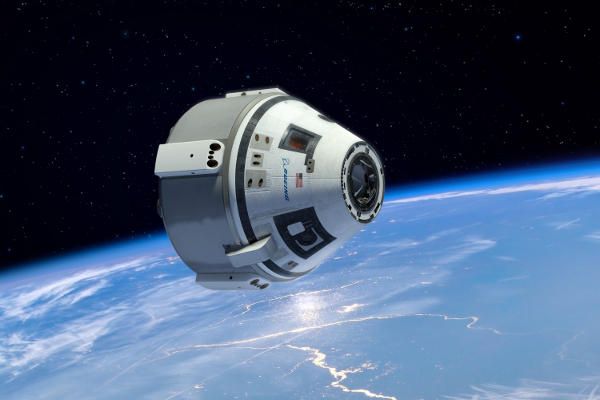PRIMER-V2 robot rides a bike just like a man. It maintains balance with a built-in gyroscope, through which he holds the balance and steers in a straight line.


PRIMER-V2 robot rides a bike just like a man. It maintains balance with a built-in gyroscope, through which he holds the balance and steers in a straight line.

“Beyond implementation of quantum communication technologies, nanotube-based single photon sources could enable transformative quantum technologies including ultra-sensitive absorption measurements, sub-diffraction imaging, and linear quantum computing. The material has potential for photonic, plasmonic, optoelectronic, and quantum information science applications…”
In optical communication, critical information ranging from a credit card number to national security data is transmitted in streams of laser pulses. However, the information transmitted in this manner can be stolen by splitting out a few photons (the quantum of light) of the laser pulse. This type of eavesdropping could be prevented by encoding bits of information on quantum mechanical states (e.g. polarization state) of single photons. The ability to generate single photons on demand holds the key to realization of such a communication scheme.
By demonstrating that incorporation of pristine single-walled carbon nanotubes into a silicon dioxide (SiO2) matrix could lead to creation of solitary oxygen dopant state capable of fluctuation-free, room-temperature single photon emission, Los Alamos researchers revealed a new path toward on-demand single photon generation. Nature Nanotechnology published their findings.
The media is all-abuzz with tales of Artificial Intelligence (AI). The provocative two-letter symbol conjures up images of invading autonomous robot drones and Terminator-like machines wreaking havoc on mankind. Then there’s the pervading presence of deep learning and big data, also referred to as artificial intelligence. This might leave some of us wondering, is artificial intelligence one or all of these things?
In that sense, AI leaves a bit of an ambiguous trail – there does not seem to be a clear definition, even amongst scientists and researchers in the field. There are certainly many different branches of AI. I asked Dr. Roger Schank, Professor Emeritus at Northwestern University, for a more clear definition; he told me that artificial intelligence is not big data and deep learning algorithms, at least not in the pure sense of the definition.
Roger emphasizes that intelligence has everything to do with the intersection of learning and interaction and memory. “I will tell you the number one thing people do, it’s pretty obvious – they talk to each other. Guess how hard that is? That is phenomenally hard, that is the subsection of AI called natural language processing, the part that I worked on my whole life, and I understand how far away we are from that.”
Take a “simple” AI concept, such as how to create a computer that plays chess, to better understand the challenge. There are, more or less, two approaches to creating an intelligent machine that can play chess like a champion. The first approach requires programming the computer to predict thousands of moves ahead of time, while the second approach involves building a computer system that tries to imitate a grand master. In the historical pursuit of how to create an artificially intelligent entity, a vast majority of scientists chose the first option of programming based on prediction.
Predicting thousands of moves sounds like a next to impossible task, but scientists have worked over decades to try and do just that, because the second option — imitation through trial and error — is that much more complex. Still, if we want to be creating an artificial intelligence that thinks on its own, Schank argues that the second option is the more promising of the two. “Some of us always saw that this could be the field that could tell us more about people by pursuing method number two (i.e. imitating the grand master),” he says.
Learning more about people while simultaneously developing true intelligence is why Schank entered the field in the first place. “When we talk about Facebook, we might think about the work of AI and face recognition; this technology has certainly come a long way, but that’s a different part of AI. The part of AI that people imagine – the talking and teaching and thinking robots – most people that talk about AI are not really talking about these questions.”
The famous Turing test, run every year with chat bots, is another example of researchers working towards developing an artificial intelligence, and yet every year there is little doubt that the AI is a computer. “This is not AI, this is something (chat bots) that could “fool” someone,” Roger argues.
In order to make a legitimately useful house robot, for example, scientists would have to solve the natural language problem, the memory problem, and the learning problem. If a future household robot makes a bad meal and overcooks the meat, you want the robot to learn from its mistakes and become smarter through experience. Schank describes this seemingly simple act – learning from mistakes and having a sense of awareness about what to do next – as the hallmark of intelligence.
Schank is particularly interested in AI that can help humans by providing more than just a great restaurant review or telling a joke on command. Currently, he is building a program called ExTRA (Experts Telling Relevant Advice), made for and through DARPA, with the objective of “getting a machine to say the right thing to the right person at the right moment. ” Actually, the emphasis is less on a machine and more on an intelligently organized body of knowledge.
Roger tells a real-life analogy, which starts with a ship traveling through the Suez Canal, when the boiler suddenly catches fire. The Captain starts to put out the fire, when his Superior, who is also on board the ship, asks the Captain what he is doing. “Why, putting out the fire of course!” replies the captain. The Superior orders the Captain to continue through the canal without stopping for the fire, explaining that he cannot stop the ship in the Suez Canal, for reasons relating to corrupt Egyptian officials who will not hesitate to take over the ship and cargo. ‘We’re not doing it, keep going,’ orders the Captain’s Superior.
“I thought that was a weird story”, remarks Schank. It was only later, after meeting a real ship captain and giving him the story premise, that Roger was surprised to find the captain arriving at the same conclusion i.e. ‘Full speed ahead!’ This story serves as an illustration of getting a story, from an expert, at a moment when you need it most – a “just in time” story. There is untold value in receiving wisdom in a timely fashion, often expressed in various cultures through oral or written short stories
On the road to getting a machine to be intelligent, one would have to conquer the “expert in the machine.” Working on artificial intelligence that imitates a human mind is not a clean and streamlined process. Developing a machine or system that can imitate a story-telling human does not necessarily equal an intelligent entity. Does the computer really understands what it’s saying? As far as we can deduce, the answer is still no. At some point, Schank remarks, scientists have to know and incorporate the structure of human memory and learning – the key issue in intelligence – in order to build a truly intelligent machine.
Schank does not believe a true, machine-based AI is going to emerge in his lifetime. There simply has not been enough funding in the appropriate direction of AI research. Yet, Roger believes that in the next 10 years, we can replicate a version of ‘just-in-time’ teaching, an indexed system that helps people think through situations in life by providing them with an extension of mind, a tool that increases human decision-making through helpful and relevant stories.

I invite you all to like my new Facebook community page meant to be a place to discuss extrasolar planet-related issues as they relate to my seminal book on the subject: “Distant Wanderers: The Search for Planets Beyond the Solar System.” https://www.facebook.com/pages/Distant-Wanderers-The-Search-for-Planets-Beyond-the-Solar-System/837428063037294?ref=hl
Distant Wanderers: The Search for Planets Beyond the Solar System, my first book, was published in October 2001.

Citizens of the Thai capital Bangkok witnessed a huge fireball descending on the horizon this morning, and thanks to the dashcams in their cars, we can admire the celestial visitor from several different angles.
The meteor entered Earth’s atmosphere around 8.45am local time, and burnt up in a huge fireball after striking down from the sky. The meteor was big and bright, but definitely smaller than the infamous Chelyabinsk meteor which exploded over Russia in 2013, damaging 7,200 buildings in six cities in the southern Ural region. There are no reports of any damage from Bangkok so far.
We put together a short video about the Bangkok shooting star, for you viewing pleasure:
IFA is the world’s leading trade show for consumer electronics and home appliances. It takes place from September 4 to 9, 2015 in Berlin.

A growing number of tech moguls are trying to solve their biggest problem yet: aging.
From reprogramming DNA to printing organs, some of Silicon Valley’s most successful and wealthy leaders are investing in biomedical research and new technologies with hopes of discovering the secret to living longer.
And their investments are beginning to move the needle, said Zoltan Istvan, a futurist and transhumanist presidential candidate.

SpaceX’s super sized Falcon Heavy rocket has a new launch date: spring 2016. That’s according to remarks given by Lee Rosen, SpaceX’s vice president of mission and launch operations, at a conference in Pasadena this week. Space News reports the executive as saying, “It’s going to be a great day when we launch [the Falcon Heavy], some time in the late April – early May timeframe.”
We’ve been hearing about the Falcon Heavy for some time, but it has seen its share of delays. It will be the world’s most powerful operational rocket, capable of launching 115,000 pounds (53,000 kg) into low-Earth orbit. In history, it only comes short of the Saturn V rocket, which powered NASA’s Apollo missions to the moon. SpaceX originally promised to launch the rocket for the first time in 2013. It was then pushed back to this year, but the project was put on ice following the failure of a Falcon 9 rocket on June 28th.
“Stonehenge is an iconic and mysterious English landmark, but it’s not the only place to attract the interest of local archaeologists. Nearly 100 stone monoliths have been discovered at a site called the Durrington Walls, about two miles north-east of Stonehenge. For the average visitor, there’s little to see at ground level — just the grassy remains of a sloping bank. But with ground-penetrating radar, researchers have mapped the area and discovered evidence of up to 90 stones three feet underground. Around 30 remain intact, measuring up to 4.5 meters tall, while fragments of a further 60 lay beside them.”

Boeing Space Taxis in a couple of years.
This past Friday, Boeing unveiled its most recent assembly plant in Florida, only the new facility won’t be building commercial jets or fighter aircraft. Instead, it will be building spaceships, yes actual spaceships.
Boeing is aiming to have its soon-to-be-flown spaceships in the air and space by 2017. Dubbed the CST-100 Starliner, the spaceships could potentially be the first commercial spacecrafts on the market, though Boeing is in a tight race with SpaceX.
NASA is forking over a huge sum of money for the partnership with Boeing, paying an estimated $4.2 billion dollars to see the development of the spacecraft through the test phase and first six flights. During these flights Boeing will be expected to deliver astronauts to the International Space Station.